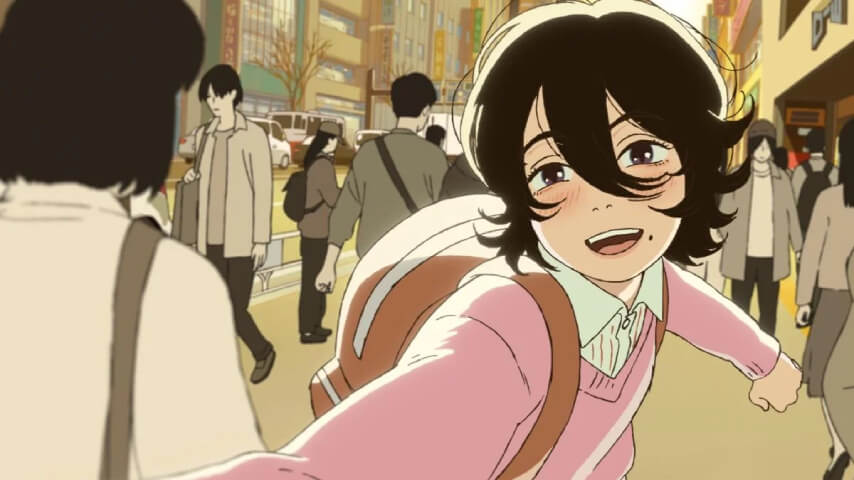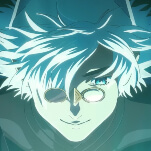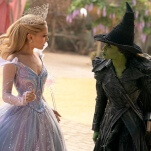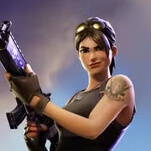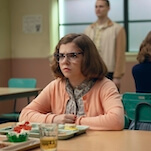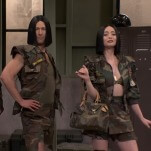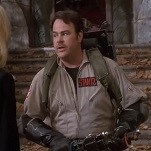Manga author Tatsuki Fujimoto is a bit of a weirdo. Despite cutting his teeth in the trope-driven world of Shonen Jump, the popular weekly magazine and website where most of his work has been published, his output doesn’t quite conform, a little heavier on ultraviolence and cannibalism than the power of friendship. After releasing several short one-shots, he got his first serialized release with Fire Punch, a comic whose perverse turns were a tough sell for many. And while his next series, Chainsaw Man, entirely broke into the mainstream, it was still unusual, bucking action manga conventions as it mixed dark comedy and tragedy with each splash of gore. Across these works, his characters are often nasty, mean, and motivated by unflattering desires. But despite these seemingly alienating qualities, Fujimoto pulls us in with fleeting moments of human connection that stand out thanks to the previous harshness, only to then gleefully tear it all away again.
After delivering these kinds of turns in the first part of Chainsaw Man, Fujimoto took a two-year hiatus from weekly publication to work on a pair of one-shots. The first of these, Look Back, is the greatest thing he’s done, a moving and emotionally devastating short story that cuts to the core of his best impulses as a writer. The anime film adaptation, a faithful take on the material from newcomer Studio Durian and industry veteran Kiyotaka Oshiyama, exudes love for its source material, this medium, and the very act of creation in every frame. It’s crushing and visually vibrant in equal measure, so much so that it may even help AI art freaks inch back a bit closer to the light.
The story follows Fujino (Yuumi Kawai), an egotistical young girl who is used to being the most talented artist in her grade. When her position is challenged by Kyomoto (Mizuki Yoshida), a recluse who never comes to class, she takes it so hard that she dedicates every spare moment to catching up. But when Fujino finally meets her perceived foe, she’s surprised to find that this rivalry is very much one-sided, and the two form a complicated bond built around the life-consuming process of creating manga.
The relationship between these flawed characters, a messy pairing defined by a mutual obsession, is the heart of Look Back. Fujino is a classic Fujimoto protagonist in that, at first, she very much sucks, and even as she gets older, she doesn’t entirely outgrow her selfish impulses. Meanwhile, Kyomoto has intense social anxiety that makes it hard for her to connect with others, making her dependent on her friend. But they’re united by something that no one else seems to understand: spending an ungodly amount of time crafting comics. Look Back’s brief 57-minute runtime doesn’t seem like it would leave enough space to articulate their relationship and shared preoccupation, but carefully framed montages and time-skips set to haruka nakamura’s bittersweet score fill out hours spent with ink-stained hands, culminating in a few fleeting moments of joy before things take a hard turn.
Beyond channeling Fujimoto’s writing and paneling, what helps further sell these moments is Studio Durian’s painstakingly rendered animation, which breathes new life into the material. These characters move with a naturalistic smoothness and specificity that punctuate their personalities—Fujino’s gestures are braggadocious and self-assured, while Kyomoto is tentative and choppy—and although these tics are mostly subtle and grounded, the animation will suddenly become much larger during emotional crescendos as limbs blur alongside the flailing resolve of its aspiring artists.
More ostentatiously, Look Back’s perspective will sometimes shift to animated renditions of Fujino and Kyomoto’s manga, conveying the underlying energy of their work, like Fujino’s dark sense of humor, and connecting to their craft. Symbolic visual flourishes, like an impossibly large classroom of judgmental students, also pull us into our central pair’s headspace, conveying why they pursue art with a nearly irresponsible zeal. It all feels faithful to the source material, but director Kiyotaka Oshiyama leaves his own stamp by showing off the visual dynamism he exhibited in the cult classic Flip Flappers; Look Back moves between scenes with a snappy but not overly hectic cadence, while storyboarding and layout choices elevate the characters’ emotions, such as a sprint home filled with a mixture of spite, passion, and determination. (Oshiyama is also the movie’s screenwriter, character designer, animation director, and handled some key animation.)
It’s fitting that a story about the inspirational power of art has received such a carefully crafted adaptation, one that implies the folks at Studio Durian were similarly inspired by the source material. All of this beautiful animation intrinsically drives at why people create in the first place, highlighting both the life-affirming and deeply messy realities of making manga. As for the former, the pair’s thousands of hours of toil result in nebulous payoffs, as they turn their backs on nearly everything else in pursuit of being good at what they do. By visualizing burnout and crises of faith, these rough spots help avoid an overly sappy and idealistic portrayal of the artistic process while highlighting the staggering amount of effort that goes into honing these skills.
But engaging with these complexities doesn’t bog down what Look Back is ultimately driving at. After grappling with a painfully rendered tragedy that’s hard to stomach, Look Back presents its central thrust: Despite the sometimes unreasonable amount of work required, or perhaps because of it, making art is worth it. The creators of Look Back are just like Kyomoto, having been inspired to create something moving that will undoubtedly go on to do the same for others, like a torch being passed.
If there’s one issue, it’s that while the constant, thoughtful visual flourishes and aesthetic additions make this about as good an adaptation as you could hope for, its close adherence to the original story results in a somewhat awkward runtime. In this way, its accuracy to the source material feels like a bit of a drawback. The story’s rapid-fire cadence works a touch better in manga form, and it would have been nice to see what this talented team could have done if they had filled in some gaps between the time skips. Still, even with its unusual length, the big moments still land with percussive force as they wring out what made the original hit so hard—in particular, the climax cleverly repurposes a recurring motif to inflict maximum emotional damage, landing like a sledgehammer.
As the AI slop era, where blue-checked tech bros fill the internet with GPT-generated nonsense, continues, it can sometimes feel like efforts to replace artists with algorithms are gaining traction. But while it may seem that this junk art landfill threatens to overflow and bury everything, stories like Look Back make it clear that the inspirational power of human-made art will always persist. As long as just a few people are moved enough to pick up pencil and paper, they may create something that does the same for someone else, and so on, in an unbroken chain. Look Back makes it harder than ever to believe that a tech fad could possibly outlive that legacy.
Director: Kiyotaka Oshiyama
Writer: Kiyotaka Oshiyama
Starring: Yuumi Kawai, Mizuki Yoshida
Release Date: October 4, 2024
